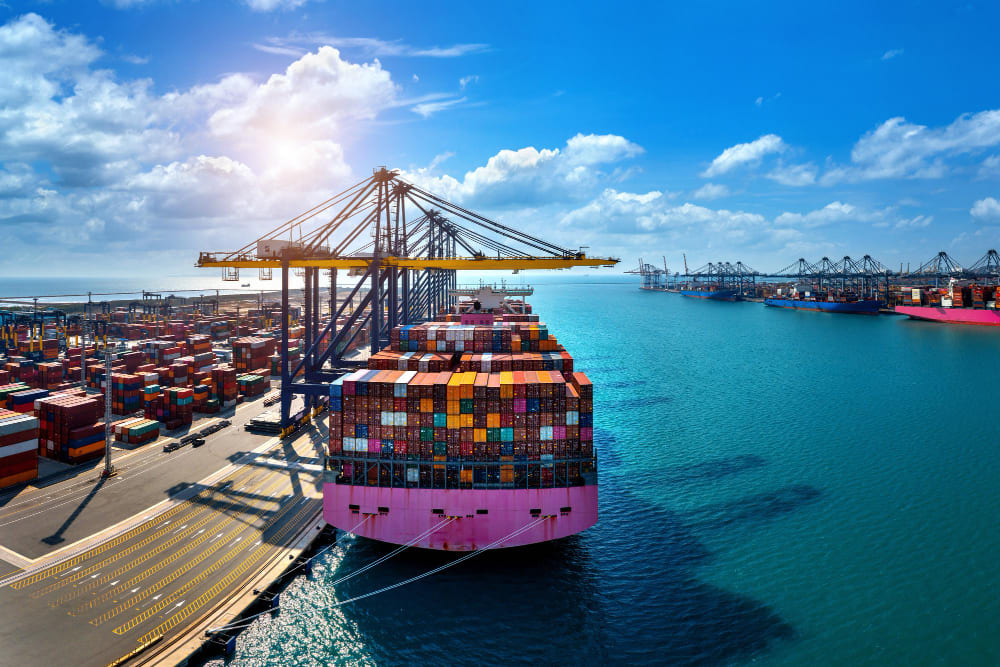In today’s ever-evolving logistics landscape, mastering the intricacies of freight shipping can significantly enhance supply chain efficiency. Businesses striving to balance cost-effectiveness and prompt delivery find Less-Than-Truckload (LTL) shipping an invaluable method. This approach not only provides efficiency in logistics but also fosters a sustainable supply chain. This article explores practical strategies to maximize your supply chain benefits through effective LTL freight management.
Less-than-truckload freight shipping emerges as a prime choice for organizations looking to optimize logistics without incurring the total costs of a complete truckload. Businesses can enjoy reduced shipping expenses and an ecological footprint by distributing shipping costs and space with other shippers. These features make LTL attractive for companies aiming to meet modern environmental and economic demands.
Introduction to LTL Freight Shipping
Less-than-truckload (LTL) freight shipping revolutionizes transportation logistics by enabling multiple shippers to collaborate and optimize a single truck’s capacity. Businesses that need to deliver lesser quantities of items that don’t justify employing a complete truck will find this method particularly beneficial.
With LTL shipping, companies can ship their products more frequently and economically instead of waiting to consolidate enough freight to fill an entire truck or incurring costs for surplus space. Because of this flexibility, businesses can lower inventory holding costs and react quickly to market needs.
Integrating LTL into a company’s supply chain broadens its logistical capabilities and enhances geographic reach. Businesses can efficiently cater to various markets by employing LTL services, improving customer service and satisfaction globally. This method fosters growth opportunities while maintaining cost-effectiveness and operational efficiency.
Understanding the Fundamentals
LTL (Less Than Truckload) shipping utilizes a detailed classification system to ascertain the costs associated with transporting freight. This system evaluates multiple factors including the cargo’s weight, dimensions and density. Each item is categorized using industry-standard freight classes significantly impacting the pricing structure.
Understanding this classification process is crucial for businesses as it allows them to devise strategic methods for packing and categorizing their shipments. By making the most of the space within the shipping vehicle and choosing the most economical shipping choices according to freight class, businesses may successfully cut down on needless costs.
Additionally, companies may improve supply chain operations, cut down on delays and increase efficiency by carefully organizing shipments according to these standards. In the end, this proactive strategy supports improved customer service delivery by saving money and facilitating a more efficient logistical process.
Benefits of LTL Freight for Businesses
One of the major benefits of utilizing less-than-truckload (LTL) freight is the potential for significant cost savings. Instead of paying for a whole truck that may not be quite full, LTL shipping allows firms who need to send smaller quantities of products to just pay for the space they actually utilize. This model is particularly advantageous for companies with fluctuating shipping volumes or those that prefer to reduce inventory costs.
Additionally, LTL shipment allows businesses to increase their shippiLTL’sequency, which today’s well with modern just-in-time (JIT) logistics practices. By adopting LTL, companies can optimize their supply chains and reduce lead times, ensuring that they can carry their supplies when they need them without excess stock.
Beyond economic benefits, LTL carriers use environmentally responsible practices. The shared transportation model means businesses can transport their goods in a single load, minimizing the required trips. This reduces emissions and lowers fuel consumption, contributing to more sustainable business operations. The combination of cost efficiency and environmental stewardship highlights the integral role of LTL shipping in contemporary sustainable business strategies.
Tips for Choosing the Right LTL Carrier
When selecting a less-than-truckload (LTL) carrier, it is crucial to evaluate several key factors thoroughly. First, consider the carrier’s geographic coverage to ensure they service the regions relevant to your business needs, both for shipping destinations and origin points. Next, look into their pricing model—understanding how they charge, whether through flat rates, weight-based pricing, or distance traveled—is vital for budgeting and cost management.
Reliability is another essential factor; research potential carriers through customer reviews and industry reputation to gauge their track record in handling freight efficiently and consistently meeting delivery schedules. It can also be beneficial to analyze the carrier’s range of services such as the availability of expedited shipping options, special handling for fragile items and integrated tracking systems which can reveal their versatility and ability to accommodate specific logistics requirements.
Additionally, evaluating the quality of customer service is imperative. Assessing how quickly and effectively a carrier responds to inquiries or resolves issues can significantly impact the shipping experience. Strong communication and support can foster a positive long-term partnership, enhancing your supply chain’s performance and reliability. Ultimately, these considerations will help you select one that aligns well with your operational needs and business goals.
Technological Innovations in LTL Shipping
Technology is reshaping every facet of LTL shipping, with innovations like automated freight matching and real-time tracking systems enhancing operational efficiencies. These advancements give businesses more insights into shipping, allowing for better planning and responsiveness to customer demands. Technological adaptations are poised to continue playing a substantial role in achieving optimized logistics. For those interested in broader industry impacts, a deeper dive into technological innovations in logistics sheds light on transformative changes across the sector.
Potential Challenges and How to Overcome Them
As with any logistics approach, LTL shipping presents challenges, including potential delays and damage during transit. To address these issues, businesses should implement robust packaging standards and use advanced tracking solutions to monitor shipments closely. Additionally, fostering proactive communication with carriers can mitigate risks and enhance reliability in delivery schedules. These measures ensure that businesses can maintain high service levels, even in the face of logistical hurdles.
Future Trends in the LTL Shipping Industry
The LTL shipping sector is expected to embrace several transformative trends. These include the adoption of eco-friendly vehicles and the integration of digital platforms to enhance operational transparency. Such innovations are vital for maintaining competitiveness and achieving sustainability goals. Companies that stay informed and adept in implementing these changes position themselves for success in an increasingly dynamic marketplace. Understanding the broader implications of these trends can illuminate the way forward, as seen in future trends in transportation.
Conclusion: Strategic Steps to Enhance Your Supply Chain with LTL
Leveraging LTL freight shipping as a component of your supply chain strategy can lead to substantial cost savings and heightened efficiency. Businesses that judiciously choose their carriers embrace technological innovations, and proactively address potential challenges will enjoy a resilient and adaptable supply chain network. By doing so, they achieve operational excellence and position themselves to thrive in a competitive logistics environment.




